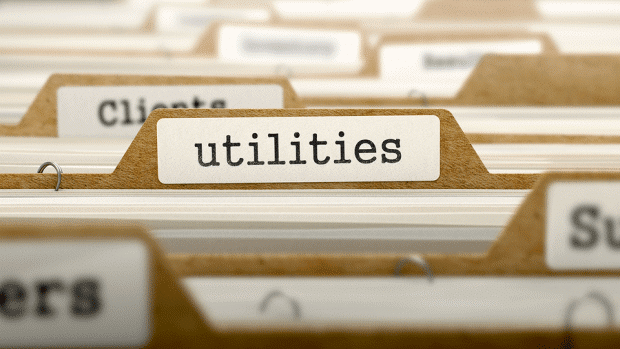
On this page
Are network distributors’ peak commercial electricity demand charges for Australian businesses like death and taxes – unavoidable? To a degree they are; but like the latter, they can be minimised.
Businesses in Australia have been slugged with capacity demand charges for quite some time. Historically, they’ve been on the increase.
It’s at a point now where demand charges make up a large proportion of many commercial electricity customers’ power bills. In the future, it’s quite possible this billing component may cost more than the consumption of electricity itself.
Demand tariffs can pose a significant threat to a company’s profitability and there’s nothing to suggest the situation will stabilise in the foreseeable future.
If you’re interested in exploring how solar energy could be a strategic asset in managing your commercial electricity costs, obtaining free solar quotes from Energy Matters could provide valuable insights. Understanding the potential benefits of solar solutions in the context of your specific business needs might offer a pathway to minimising the impact of demand charges without compromising your operations.
Is solar energy suitable for your business?
Solar energy has numerous advantages that are worth investigating. Investing in solar will minimise your operational costs, reduce your company’s carbon footprint, and prepare it for the future. A commercial property with a solar installation is excellent for business.
Contact us today for up to 3 FREE solar quotes from commercial solar firms we’ve pre-qualified and vetted for their track record of delivering the best business solar systems in Australia. Get your free quotes and begin your solar journey today!
What is a demand charge?
A demand charge/tariff is also known as a capacity charge. It’s an element of a commercial power bill where a daily charge is determined by the highest power demand (load) observed during a certain timeframe during the day in a specified period.
This period can be up to a year in some cases for commercial customers.
For example, if a business has a peak demand of 50kW due to a large pump running for just one hour on a single day in a year, it may receive a daily demand charge to use up to that level for a full year. This occurs even though normal usage maybe 5 or 10kW at any time.
Are demand charges worth it in Australia?
One of the main challenges with demand charges is their unpredictability. Demand charges can vary greatly depending on the day, season, and weather conditions. This can make it difficult for businesses to accurately forecast and budget for demand charges, leading to unexpected costs that can impact their bottom line.
Another challenge is that demand charges may sometimes align with the benefits received. For example, a business may have a short spike in energy usage during a peak period due to a temporary operational need or equipment malfunction, resulting in high demand charges. However, this short-term spike may not have a significant impact on the overall strain on the electricity grid, and the demand charges may not necessarily result in a proportional benefit to the business or the electricity grid.
Despite these challenges, there are cases where demand charges can be worth the benefits. For example, businesses with consistent and predictable high energy usage during peak periods, such as data centres, may find it cost-effective to implement load-shifting strategies, invest in energy storage systems, or adopt renewable energy sources to manage their demand charges effectively.
Real-world examples and case studies can provide insights into the effectiveness of demand charges in Australia. For instance, a manufacturing facility in Sydney implemented load-shifting strategies, which involved scheduling energy-intensive operations during off-peak hours, successfully reducing their demand charges by 20% and resulting in significant cost savings.
Similarly, a commercial building in Melbourne installed an energy storage system, which allowed them to offset peak demand and lower their demand charges by 30% over a year, demonstrating the potential benefits of demand charges management strategies.
However, it’s important to note that demand charges may not always be cost-effective for all businesses. Small and medium-sized enterprises (SMEs) with irregular energy usage patterns or limited resources to invest in demand charges management strategies may find demand charges to be a significant financial burden without proportional benefits.
It’s crucial for businesses to carefully evaluate their energy usage patterns, assess the potential benefits of demand charges management strategies, and consider the associated costs before determining whether demand charges are worth it for their specific circumstances. Consulting with energy experts or seeking advice from energy providers can also be beneficial in understanding and managing demand charges effectively.
How to reduce commercial electricity demand charges
To reduce the impact of capacity charges on your business, here are a few strategies:
- Audit your consumption to identify risky periods
- Avoid concurrent use of energy-hungry equipment.
- When considering the purchase of new equipment, compare the load ratings.
- Install equipment that will switch off non-essential equipment during peak periods (load shedding).
- Investing in renewable energy sources. Australia is known for its abundant sunshine, making solar power panels a popular choice for businesses looking to generate renewable energy. Installing solar panels on the rooftop of a business facility can help offset electricity consumption from the grid, reducing peak demand and demand charges.
In addition to solar panels, wind turbines can be a viable option for businesses, especially in regions with consistent wind resources. Wind turbines can generate electricity to offset a business’s energy usage, which can help lower demand charges.
- Load shifting is a strategy that involves adjusting the timing of energy usage to avoid peak demand periods. By shifting energy-intensive processes or operations to off-peak hours, businesses can reduce their demand charges. Many energy providers in Australia offer time-of-use (TOU) tariffs, which vary based on the time of day or season. By taking advantage of lower TOU rates during off-peak periods, businesses can effectively lower their demand charges. Check out our page for Time of Use (TOU) rates/tariffs.
For example, a business could schedule non-essential operations, such as running large machinery or charging electric vehicles, during off-peak hours when electricity rates are lower. By doing so, the business can avoid consuming large amounts of electricity during peak demand periods, which can help lower their demand charges.
- Install solar and/or battery storage or retrofit commercial energy storage to an existing solar power installation.
Battery Energy Storage Systems (BESS) can be another effective way for businesses to lower demand charges. These systems store excess energy during low-demand periods and release it during high-demand periods, helping to reduce peak energy usage.
By installing a BESS, businesses can draw electricity from the stored energy during peak demand periods, thereby avoiding higher demand charges. Energy storage systems can also provide backup power during grid outages, reducing the risk of production disruptions.
The cost of battery energy storage systems has declined recently, making them more accessible for businesses. In addition, some states in Australia offer incentives, such as rebates or tax credits, for businesses that install energy storage systems, which can further offset the upfront costs.

How commercial solar and energy storage can help businesses manage demand charges in Australia
Energy storage systems are becoming an increasingly popular solution for businesses in Australia to effectively manage their energy use, reduce demand charges, and provide backup power services. Through load shifting, demand charge management, and backup power capabilities, energy storage systems offer businesses flexibility, customisation, and environmental benefits. As electricity costs continue to rise and businesses seek ways to optimise their energy management strategies, energy storage systems are emerging as a viable solution to help businesses effectively manage demand charges, reduce costs, and enhance their overall energy resilience. Working with qualified energy consultants and experienced energy storage providers can help businesses design and implement tailored solutions that meet their unique needs and contribute to their demand charge management strategies.
A properly designed, good quality commercial solar power system combined with expert energy management advice can help a business avoid exceeding load thresholds and reduce capacity charges dramatically.
With a commercial energy storage system added to a solar PV system in Melbourne, solar power becomes even more effective; particularly in scenarios where the peak electricity load may fall outside of solar production times.
Next steps
If you’d like to learn more about minimising commercial electricity demand charges through the use of solar and battery systems; contact Energy Matters’ commercial experts at 1800 EMATTERS (1800 362 883) or via our contact form.
Our team will carefully analyse your power consumption profile and provide a detailed solution, including potential savings, for your review. This is obligation-free. Residential customers can always use our solar power solar quote form.
Still can’t afford to switch to solar power?
Are you considering getting solar panels but are currently short on funds? You can still invest wisely, and Energy Matters can help you.
Powow and Energy Matters have teamed up to provide our consumers with an alternative to switching to solar power and battery storage. The biggest obstacle to installing solar and battery storage is typically finance. With Powow’s PPA and VPP, our customers will have a $0 upfront option and financial stability in the uncertain energy market.
Get up to 3 obligation-free quotes by getting in touch with us right away. Find out what payment plan options suit your needs and budget!
Check out our page for Powow: Power Purchase Agreement (PPA) and Virtual Power Plant (VPP).











































